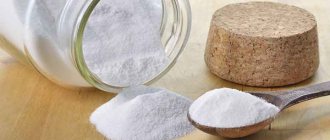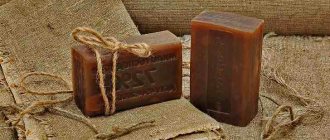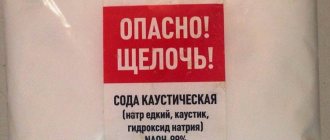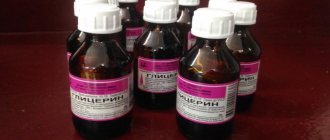Baking soda is an excellent leavening agent that is most often used to make dough. But don't underestimate her!
It is also a universal folk remedy for cleaning. They wash and clean almost everything. It is safe for health, does not cause allergies, leaves no odor, is cheap and perfectly cleans a wide variety of contaminants.
Our selection of 22 ways to use it will prove this. Just stock up on a couple of packages - and any old dirt will not be scary for you.
What is soda ash
To obtain soda ash, carbonated salt is calcined at high temperatures, that is, calcined. It looks the same as food, but has different properties.
Soda ash is a strong alkali, so it is used in everyday life: the product effectively copes with dirt and removes stains. Thanks to its chemical composition, it is stronger and more economical than its food counterpart. You can buy the product in household goods stores at a price of 25 rubles per kilogram.
Soda ash in the kitchen
Baking soda is suitable for cleaning kitchen appliances, dishes and furniture. Caution: This is a mild abrasive, so be careful not to rub too hard or you may scratch the surfaces.
Washing dishes
Soda can be used to clean old grease and stains from tea and coffee mugs. There are four ways to use soda:
- Pour baking soda onto a sponge or directly onto the dirty area and rub gently.
- Mix baking soda with a little water. The result is a cleaning paste - this is a more delicate cleaning agent than regular powder.
- Mix baking soda with a small amount of hydrogen peroxide or citric acid. The result is a solution that bleaches contaminated areas well and eliminates unpleasant odors.
- Add a handful of baking soda to your dishwashing liquid: this will enhance the cleaning effect of the product.
Cleaning pots and pans from carbon deposits
A paste of salt, hydrogen peroxide and soda can easily remove burnt fat. Distribute the product over the contaminated areas and set the dishes aside for an hour. After treatment, the remaining fat can be easily washed off with the hard side of the sponge.
Not all dishes can be washed with soda: it is an abrasive that can ruin the fragile Teflon coating or aluminum. If you're concerned about baking soda leaving scratches, explore other cleaning methods.
Descaling
Take a clean, damp sponge and some baking soda. Rub the product onto the inside of the kettle, add water and boil. Then pour out the liquid and rinse the container with running water. This method is only suitable for cleaning metal kettles: it is better to clean plastic and glass surfaces without abrasives.
Cleaning household appliances
To clean the stove and oven from dirt and remove unpleasant odors, follow the instructions:
- Prepare soda paste.
- Apply it evenly to the dirty surface and leave for 12 hours.
- Mix vinegar with water and spray through a spray bottle over the baking soda paste. Leave for 15 minutes.
- Remove the composition with a damp cloth.
You can also use baking soda to clean your refrigerator and hood:
- Add 1 tablespoon of product to 1 liter of water.
- Pour the liquid into a spray bottle.
- Spray onto contaminated surfaces and leave for 10 minutes.
- Use a damp cloth to remove the solution.
To clean old grease from your microwave, prepare a solution, place it in the oven and turn on the heating mode for 5-10 minutes. The composition will soften the dirt and make it easier to clean.
Anti-limescale agent
To remove limescale from the bottom of a kettle or pan, you need to pour 5-6 tablespoons of sodium bicarbonate on the bottom, add 2 glasses of water and put on fire. After boiling, stir the liquid into the container and let it boil for another 5-7 minutes. After this, remove the dishes from the heat, let them cool a little and wash them as usual. Dirt, grease and limescale can be easily washed off the surface of a kettle or pan. You can also remove limescale from sinks or taps with baking soda moistened with water.
8 unusual ways to use baking soda in the kitchen
To quickly clean your home of dirt and dust, you don’t have to spend a lot of money on special chemicals. One pack of soda is enough to clean an entire apartment.
Using soda ash in the bathroom
Baking soda removes plaque and clears blockages. The product is especially effective for cleaning tiles and plumbing: it will help polish surfaces to a shine.
For plumbing
These methods will help in the fight against rust, salts, lime and soap deposits. Mix baking soda and soap shavings with water to form a thick paste. Distribute the product evenly over dirty surfaces for an hour and rinse thoroughly.
To give your plumbing fixtures a shine, take table vinegar and spray it on your faucets. Sprinkle the areas with baking soda, and after 15 minutes, rub thoroughly with a sponge and rinse.
If the bathtub is very dirty and has not been washed for a long time, then this recipe will do:
- Take table vinegar, bleach, baking soda and soda ash.
- Mix both types of soda in equal proportions and add a little water to make a thick paste.
- Apply evenly to the most problematic areas and leave for 15 minutes.
- Prepare a solution of vinegar and bleach in equal proportions. Treat contaminants with the resulting liquid. After 30 minutes, rinse thoroughly with water.
This is a very aggressive method and is not suitable for cleaning acrylic bathtubs. For them it is better to use more gentle means.
For tiles
To restore the shine and cleanliness of the tiles, take 3 tablespoons per liter of water. soda Wash the tiles with the resulting solution, and then wipe it with a clean, damp cloth.
To clear blockages
To remove a blockage in the kitchen or bathroom, use one of the following methods:
- Pour 130 g of soda into the drain and carefully pour in 1 liter of boiling water. After 30 minutes, turn on running water to flush the drain.
- Pour 130 g of soda, 150 ml of vinegar and bleach alternately and pour into the drain and close it for 30 minutes. Then pour in 3 liters of hot water.
When cleaning the washing machine
Over time, an unpleasant odor appears inside the drum: if the parts are not dried well after washing, mold will form inside the equipment and pathogenic bacteria will begin to multiply.
Soda ash will clean the drum and help get rid of unwanted odors. Take a glass of water, 250 g of soda, 2 glasses of vinegar (9%). Combine baking soda and water. Pour the solution into the liquid compartment and the vinegar into the drum. Select any washing mode and run the machine for 3 hours. This method of processing will not harm the machine and will clean it of germs and scale.
Carpet cleaning
Carpets will need to be vacuumed. It’s even better to take them out into the snow, trample on them together and sweep them with a broom. If you don’t have the strength to move furniture and drag a huge carpet outside, you can sprinkle it with salt, moisten a broom in warm soapy water and sweep away. As the broom gets dirty, wash it in the same water and replace the salt with new one. You can replace the salt with dry sawdust - they are sold at any pet store.
Drinking tea will help clean the carpet and refresh its colors. First, the carpet is thoroughly cleaned with a vacuum cleaner, then sprinkle wet tea over the surface of the carpet, and then sweep it away with a piece of foam rubber. And after cleaning the carpet with a swab with sauerkraut, its pile acquires a fresh shine and softness. The acid contained in sauerkraut degreases wool fibers and gives them elasticity. Due to the fact that irregularities on the surface of individual fibers are smoothed out, the colors of the carpet appear cleaner and brighter
Baking soda's ability to absorb odors is useful when cleaning carpets. Especially for those who have pets in their apartment. Sprinkle baking soda generously over the carpet. Leave overnight or longer if this is not inconvenient. Sweep most of the baking soda off the carpet and vacuum the rest. Repeat if the smell is still there (you may not have used enough baking soda). Wet baking soda absorbs odors much more effectively than dry baking soda. However, it gets stuck in the carpet fibers and is more difficult to clean out.
Washing clothes
Baking soda works well to whiten and remove stubborn stains. This is a strong product, so it can only wash thick items made of cotton or linen. Such washing will ruin synthetics, wool and silk. It is not recommended to use soda for colored items: the aggressive composition can ruin the color of the fabric.
Wash.
Soda can be used as a regular washing powder: it is added to the basin when soaking or washing in a ratio of 1 tbsp. for 2–3 liters of water. When washing in a machine, add 3 tbsp. l. funds in the powder department. Choose a temperature above 40°C, otherwise the soda will not dissolve in the water.
Washing children's clothes.
Soda is hypoallergenic, completely dissolves in water during washing and has no odor, so solutions with low concentrations of the product are safe for washing children's clothes. Recipe: take up to 50 g of detergent for 5 liters of water, soak laundry in the solution for 1–2 hours, wash and rinse thoroughly by hand or in a washing machine
Removing stubborn stains
Add soda to the basin at the rate of 1 tbsp. powder per 2 liters of water and stir well. Rub the contaminated areas with laundry soap and soak the items in the solution overnight. In the morning, wash your clothes as usual or in a washing machine.
You can make an effective stain remover from soda ash:
- Take a spray bottle and pour 250 g of water, 40 g of vinegar into the bottle and mix well.
- Add 30 g of soda and shake.
- Spray the resulting mixture onto the stain to wet the fabric and leave for 15 minutes.
- Gently scrub the stain with a sponge or soft brush and wash as usual.
Fabric softening.
Towels and bed linens are washed more often than other items, so over time they become rough and tough. Soda ash will help restore softness:
- When washing in a washing machine, add 50 g of soda to the conditioner compartment and set the temperature to 40 to 100°C. Add an extra rinse to rinse any remaining product from the fibers.
- When washing by hand, soak the item in a bowl of baking soda for 15–20 minutes. Concentration of soda solution: 5 grams of powder per 5 liters of water.
Adviсe
In order not to completely ruin the appearance of the dishes, you should not clean aluminum frying pans, plastic and wood products with soda and glue.
It is strictly forbidden to boil forks and spoons made of cupronickel. The result of digestion is a darkened frage.
It’s easy to descale the kettle : just add 1 tbsp. baking soda, add water and boil it for thirty minutes. Afterwards, the water is drained and the walls of the kettle are wiped with a soft sponge. Details are in this article.
Where should you not use soda ash?
- You cannot wash capricious and colored materials with laundry soda: silk, wool, leather, suede, dermantine, membrane clothing.
- Do not use this product to clean natural interior materials and coatings that require special care: for example, copper, wood.
- Use soda ash with caution on painted objects and varnished surfaces: the substance will corrode the paint.
- Alkali has a bad effect on plastic and rubber products. Therefore, it is better not to wash PVC windows, acrylic bathtubs, shower doors or refrigerators with soda solutions.
- It is not recommended to expose brickwork or fiberglass tiles to strong alkalis.
Curtains
Marks from a ballpoint pen on curtains can be eliminated with cotton wool and cologne. Ammonia will also work.
Starch will remove iodine stains. Wet the stain with cold water and rub with starch until it disappears. Be sure to wash the stain with soap and water. In the absence of starch, use alcohol or vodka.
A soda solution (100 g of soda per 10 liters of water) will help you quickly (and without much effort) clean a dirty floor.
Precautionary measures
Soda ash can be harmful to health if precautions are not taken when using and storing it.
Rules:
- When working with soda, protect your hands with gloves, take care of your respiratory system and mucous membranes.
- Keep the product away from food and medicine.
- Store it in an airtight glass container away from children and pets in a dry, well-ventilated area.
If soda gets on your skin or mucous membranes, immediately wash them with water. The chemical may cause burns on sensitive skin.
Briefly about the main thing
- Soda ash is a universal and inexpensive cleaning product that has a cleaning effect.
- The effect of soda can be enhanced by other means: citric acid, vinegar, hydrogen peroxide.
- The product must be used with caution: baking soda is a strong alkali, which is not suitable for washing finicky fabrics or cleaning wooden and plastic surfaces.
- When working, take precautions and use skin and mucous protection products.
- Sometimes it's better not to experiment. Order maintenance cleaning: cleaners will carefully deal with complex stains and restore the appearance of any, even the most capricious coatings and materials.











